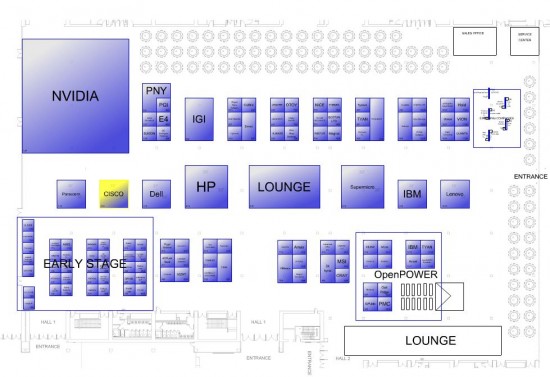No longer just the domain of gamesters and young-at-heart, the graphics industry is now providing stunning performance to all sorts of industries such as manufacturing, finance, healthcare and design. Perhaps none more so though than the Oil and Gas Industry, as companies explore in harder-to-get-at places and dangers to workers are greater than ever. The GPU Technology Conference in San Jose this week showed how far we’ve come in accelerating energy discoveries with less time spent travelling to far off dangerous environments.
So what’s it all about? Well, for starters four partners – Cisco, NetApp, NVIDIA and Citrix have got together to change the way users of high performance graphics applications can be used in remote and local environments. Normally geophysicists and geoscientists using, say, Schlumberger or Halliburton seismic analysis software use powerful (but expensive) workstations or have to work close to large central datacenters to get the kind of performance they need to get their applications running fast enough and their graphics visualizations looking smooth and not jittery.
That’s where the four partners come in. Putting it simply Cisco and NetApp provide a best-in-class virtualized data center with ‘Flexpod’, then NVIDIA provide high-performance GPUs (Graphics Processor Units) that slot into the Flexpod (remember it’s based on Cisco UCS so have heaps of flexibility), and then remote users can access their graphics applications on inexpensive devices (even tablets!) using VDI (Virtual desktop infrastructure) software from Citrix. This is on show in various places in the Exhibit hall, including Cisco’s booth # 219.
What does it all mean? Well, for starters, really fast loading of the datasets – no waiting around in the break room for ages! Also – remote access to the analysis of the data – so the data never leaves the datacenter so better security. Add to that the possibility that scientists can now work together using Cisco and other collaboration tools, and productivity just got a shot-in-the-arm. The demo stowed the applications running remotely – performance was indistinguishable from running locally on expensive and cumbersome workstations or on local datacenters!
Folks at the booth were impressed. “Wow – that’s graphics visualization and analysis on steroids'” said one visitor. “We could really use that where I work” said another (yes, we’ll be following that one up!).
Other highlights today were Cisco presenting the benefits of UCS to a sizable audience, and Dassault Systems, an accomplished Cisco UCS user, talking about how they use NVIDIA GRID and CISCO UCS for Graphics Virtualization. Laurent Seror, Founder and CEO, Outscale, presents. Tomorrow we’ll hear from the Ford Motor Company with a presentation entitled ‘So you want to Deploy High Resolution Graphics Desktop Virtualization’. Chip Charnley, Technical Expert, Client Technologies, Ford Motor Company will review both the process of doing, and the results of the Proof of Concept for implementing XenApp and XenDesktop that was conducted jointly by Ford Motor Company, Citrix and Cisco.
Finally, Cisco will be presenting the ‘VDI Evolution at the Speed of GRID – VDI 2.0 IS HERE!’ session. Jason Marchesano is a Technical Solutions Architect for Cisco, and he’ll be joined by Shawn Kaiser who is a member of the Data Center Solutions Architecture team, focused on virtualization.
Stay tuned – I’ll give an update after the event with any customer take-aways I can glean!

CONNECT WITH US